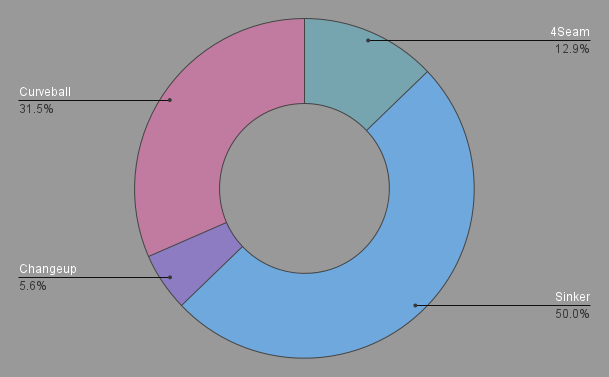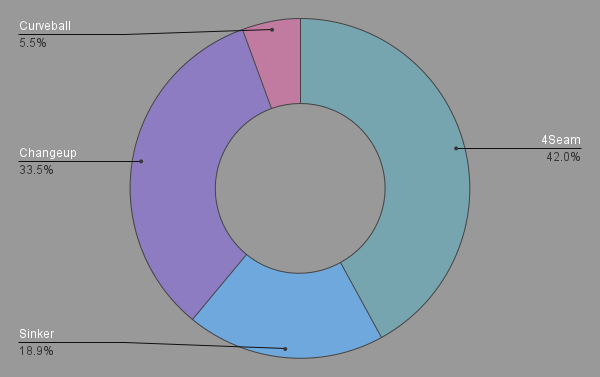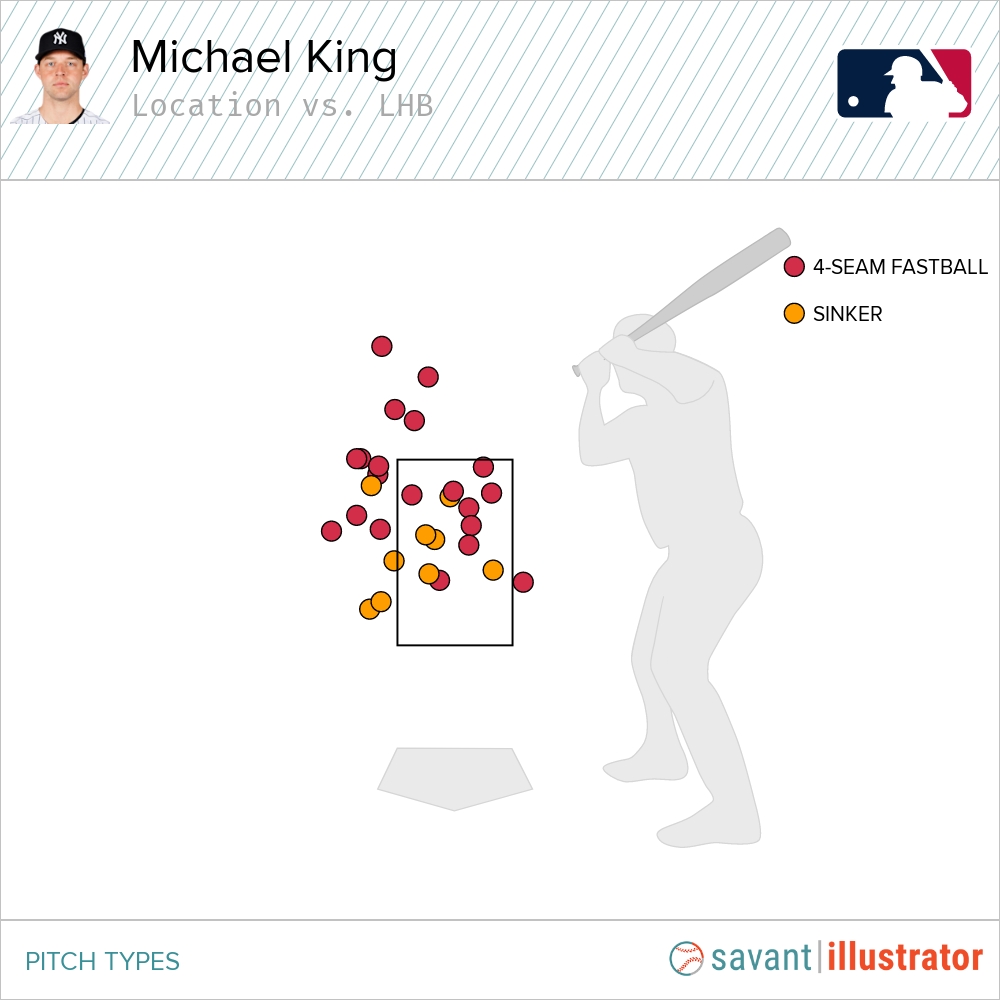You may remember New York Yankees right-hander Michael King from 2021 when he tossed the 100th immaculate inning in major league history. This past Friday night, King pitched three less historic—but no less dominant—innings in relief. He faced 10 batters and struck out eight of them. With a new pitch and new pitch mix, King looks poised for his breakout.
Pitch Mix
In order to understand his recent success, let’s take a look at King’s pitch usage. While the depth of the Yankees pitching staff has kept King in the bullpen, he isn’t your ordinary single-inning, high-strikeout reliever. King has a deep arsenal that allows him to go deep into games. But that arsenal is developing. Even in a short sample, we can already see that King has made significant changes to his pitch mix in 2022:
Pitch Usage: 2021 v. 2022 (data from Baseball Savant)

The most obvious change here is that King has essentially dropped his cutter altogether. The right-hander has also spread his usage out across multiple pitches. In 2021, King threw his sinker 53%. In 2022, that number is just 39.5%. King’s curveball has taken up most of that difference, while his four-seam has absorbed his cutter usage. Real insight comes when we investigate how each of his pitches are used against righties and lefties. King’s arsenal is defined by a collection of pitches with elite horizontal movement in multiple directions. As we’ll see, King’s arsenal is greater than the sum of its parts.
Approach vs. RHB
Against right-handed hitters, King uses a mix of sinkers (50.0%), curveballs (31.5%), and four-seam fastballs (12.9%). Although King mixes up his usage, the primary approach he takes against right-handers is to play his curveball off of his sinker.
Pitch Usage vs. RHB (data from Baseball Savant)

The sinker is his bread and butter pitch. It averages 95 MPH with above-average horizontal and vertical movement. King throws it all over the zone, sometimes in on the hands and sometimes for backdoor break, as he does here against Myles Straw:
https://gfycat.com/weepyinfamousbactrian
King pairs this sinker with a new curveball, one of the keys to recent success. King learned the pitch from Corey Kluber himself during the two-time Cy Young winner’s year-long tenure in the Bronx. Classified as a curveball by Statcast, King’s Kluberball is a slider/curve hybrid with elite horizontal movement (18.3 in.), but minimal vertical drop. In 2022, that unique combination has produced a whiff like the one below about a quarter of the time it is thrown.
https://gfycat.com/tautwarlikefinnishspitz
To put that movement into perspective, the average major league curveball moves about half as much horizontally (9.3). The pitch is just one of many new breaking balls we’ve seen debuted this season with added horizontal movement. Some are calling these new pitches “sweepers” or “whirlies.” King doesn’t utilize the popular whirly grip, but with his low arm slot, he produces a similar kind of movement with his Kluberball. With that movement, King has generated whiffs on 60% of his opponents’ swings.
Combining the sinker and curveball allows King to hammer hitters with opposite kinds of dramatic horizontal break. Between the two pitches, there’s a combined 34.5 inches of break. In other words, as a pitch leaves King’s hand, a right-handed batter has to be prepared for it to break about a foot and a half in either direction.
Approach vs. LHB
Against left-handed batters, King uses a mix of four-seam fastballs (42.0%), changeups (33.5%), and sinkers (18.9%). In essence, King’s pitch mix against lefties is the opposite of his pitch mix against righties:
Pitch Usage vs. LHB (data from Baseball Savant)

King’s primary pitch against lefties, his four-seamer, has above-average ride and velocity. King uses the fastball to pepper the upper part of the zone. Sometimes, he’ll mix things up, using his sinker middle-away:

King pairs his fastball and sinker with a put-away changeup that has exceptional arm-side break. His -18.6 inches of horizontal movement is sixth-highest among right-handed changeups but his vertical movement is minimal. In many ways, King’s changeup moves like his curveball, just in the opposite direction. The sweep of his changeup allows King to miss lefty bats as the pitch tails off to his arm side. Take a look at this whiff from switch-hitting José Ramírez, the mirror image of Straw’s swinging strikeout.
https://gfycat.com/testyaccurategrayreefshark
King’s approach against lefties has not just been dominant, it has been truly remarkable. Among RHP who have faced 10 batters or more, King has the lowest wOBA allowed (0.0) in baseball. He’s faced 12 LHB, struck out six, and walked just one. Obviously, numbers like these won’t last long, but King’s arsenal makes him a formidable opponent against even the best left-handed hitters. His changeup with its sweeper-level sweep has a remarkable 31.8% SwStr and a 54.5% CSW on the season.
Once and Future King
In 2021, King was the sixth starter for the Yankees before heading to the injury list with a hand injury. Over the course of 2022, he may get a shot at that starter role once again. Until then, he’s a dominant long-reliever who deserves more attention. For fantasy managers, King’s long-form relief may offer a handful of saves and vulture wins, along with plenty of strikeouts. In that way, his value is reminiscent of teammate Chad Green a few years ago. But if and when King gets a shot at the rotation, be prepared, because Michael King may be one of the best pitchers currently buried within an absurdly deep pitching staff.
Featured image by Doug Carlin (@Bdougals on Twitter)

